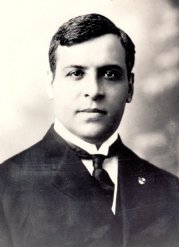Design
Design
Personality
Chart Properties
Your Cross represents the specific theme of your life. This cross embodies your unique potential & the lessons you're here to learn, providing a roadmap to fulfilling your life purpose.
We use the UTC birth time and date to do the calculations required to generate your Human Design chart.
Buy Tokens
Pay as you use, no expiry and no subscription required.Prompt Ideas
Get inspired with some epic prompt ideas.Jan (painter) Van Beers's Biography
Belgian society painter and illustrator, the son of the poet Jan van Beers (the younger).
Van Beers studied at the Royal Academy of Fine Arts in Antwerp. He became the leader of a group of young dandies (“Van Beers clique”), that included the artists Piet Verhaert (1852–1908), Alexander Struys (1852–1941) and Jef Lambeaux (1852–1908). They were well known for their mischievous and eccentric behaviour, including walking around Antwerp dressed in historic costumes.
Van Beers began his career as a history painter, producing works relating to the Renaissance. In 1880 he moved to Paris and started producing genre and portrait works of the middle classes and developing a successful line in attractive draped young ladies reading a letter or a book or day-dreaming about a lover. Vanity Fair called him “The Modern Wiertz”, after the romantic Antoine Wiertz (1806-56), who painted bizarre and melodramatic themes.
In Paris, Van Beers began construction of a house, off the Avenue du Bois de Boulogne, where each room was to be of a different design. They called it the work of a madman. Van Beers was an active commercial illustrator and his work featured in posters and advertising.
In 1881, Van Beers exhibited two works at the Brussels Salon, both painted in a new hyperrealistic miniature style. His work the “Sirene” was suspected by the critics Max Sülzberger, Georges De Mons and Lucien Solvay to be a “photo-peinture”, a painting created over a photograph. Though Van Beers used photography for his paintings, especially when portraying deceased persons, he did not paint photographs.
Van Beers suggested that experts could scrape off the paint to determine the truth of the allegations. A semi-official investigation followed an a fool attacked his work. Eventually van Beers started legal proceedings. “L’affaire Van Beers” gave him Europe-wide attention. The eventual report was in his favour (“an honest man”). Previously a largely unknown artist, van Beers was able to use his new found fame to sell his work for large sums of money. He used assistants to meet the large demand of his work.
In 1884, Jan Van Beers produced the pen-and-ink sketches for the edition de luxe of his father’s poetry.
He died 17 November 1927 in Fay-aux-Loges, Belgium.
Link to Wikipedia
Your Cross represents the specific theme of your life. This cross embodies your unique potential & the lessons you're here to learn, providing a roadmap to fulfilling your life purpose.
We use the UTC birth time and date to do the calculations required to generate your Human Design chart.





